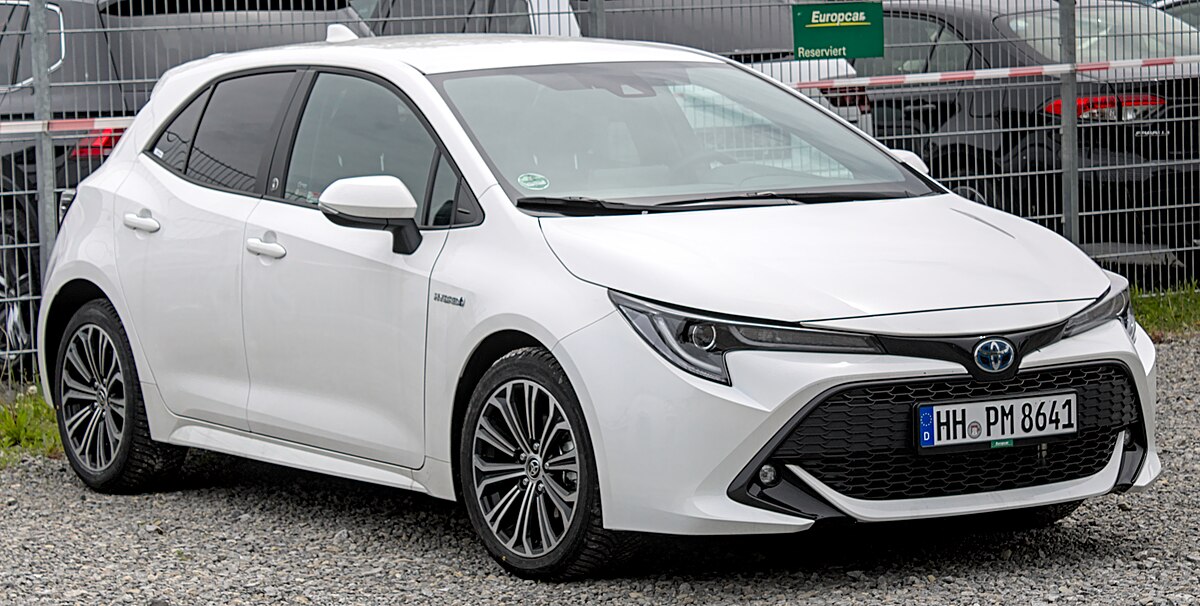Regular oil changes are a non-negotiable aspect of car ownership, essential for maintaining engine health and prolonging vehicle lifespan. But while the task itself is straightforward, the cost can vary wildly depending on the make and model.
Some cars are built with affordability in mind, with easy-to-access oil filters, basic oil specifications, and widespread service availability—all leading to oil changes that barely dent your wallet.
Others, however, demand specialized oils, unique filter configurations, or dealership-only servicing, pushing routine maintenance into premium territory.
In this article, we explore five vehicles where oil changes consistently cost under $50, making them ideal for budget-conscious drivers who want reliability without steep upkeep costs.
On the flip side, we’ll also spotlight five vehicles that break the bank when it comes to oil changes, often exceeding $150 or even more. These are typically high-performance or luxury models where even basic maintenance becomes an investment.
Whether you’re shopping for your next daily driver or reevaluating your current car’s long-term ownership costs, understanding how much you’ll spend on something as routine as an oil change can help you make smarter, more financially sound automotive decisions. Let’s begin with the affordable side of the spectrum.
Also Read: 5 Cars That Don’t Suck in LA Traffic and 5 That Are a Nightmare
5 Vehicles Where Oil Changes Cost Under $50
For many drivers, the price of an oil change isn’t just a routine line item—it’s a recurring cost that can stack up significantly over the lifespan of a vehicle.
Fortunately, there are still several models on the road today that offer budget-friendly maintenance without sacrificing performance or dependability.
The key factors that influence an affordable oil change include the type of oil required, the ease of access to the oil filter, and the labor intensity involved in the procedure.
Vehicles that use conventional or semi-synthetic oil instead of full synthetic tend to have lower material costs.
Likewise, designs that keep oil filters accessible without removing underbody panels or special equipment reduce labor time, meaning even local shops or quick-lube chains can perform the service without inflated fees.
And of course, popularity plays a role—when a vehicle is widely owned, shops stock more parts and become efficient at working on it, leading to competitive pricing.
This section highlights five vehicles known for keeping oil changes well under $50, often in the $30–$45 range depending on your location and service provider.
These models are favorites among practical buyers—commuters, first-time car owners, and fleet managers alike—because they pair respectable reliability with minimal maintenance headaches.
We’re not just listing cheap cars, either. Each vehicle featured here has earned its reputation by offering real-world savings over time, with user-reported service costs that consistently trend toward the low end.
Whether you’re looking for your next cost-effective daily driver or trying to recommend a car to someone who prioritizes low ownership costs, these five models are great examples of automotive sensibility.
Let’s take a closer look at five standout vehicles where oil changes remain refreshingly affordable.
1. 2012–2018 Toyota Corolla
The Toyota Corolla has long been a poster child for dependable, low-cost motoring—and the oil change is no exception.
Particularly for model years 2012 through 2018, the Corolla stands out as one of the easiest and cheapest vehicles to maintain, with oil changes that often cost between $35 and $45 at independent shops and quick-lube centers.
So why does the Corolla keep maintenance costs so low? First, these model years use the tried-and-true 1.8-liter 4-cylinder engine, which is designed for ease of service.
It requires regular 0W-20 synthetic oil, but thanks to the vehicle’s massive popularity and simple layout, the filter and drain plug are extremely easy to access. That means labor time is minimal—many oil techs can finish the job in under 20 minutes.

Second, the parts are incredibly affordable. Genuine Toyota oil filters can be bought in bulk for just a few dollars, and the engine’s modest oil capacity (about 4.4 quarts) keeps fluid costs down. Even when synthetic oil is required, the lower volume offsets the price per quart.
Another key factor? Availability. The Corolla is one of the most common sedans on the road, so virtually every service center is prepared to handle it.
Many offer package deals or loyalty discounts that keep the cost of routine maintenance like oil changes under the $50 threshold, especially when coupons or promotions are in play.
Owners also report that DIY oil changes are incredibly simple on this vehicle. With only basic tools and a set of ramps, many Corolla drivers handle it themselves for under $25, making it an ideal car for people who want to minimize both parts and labor expenses.
For commuters, students, and anyone managing a tight budget, the 2012–2018 Toyota Corolla remains a clear winner for long-term affordability, and its cheap oil change costs are a big part of that equation.
2. 2005–2011 Honda Civic
The 2005–2011 Honda Civic strikes a rare balance between performance, reliability, and maintenance affordability—and one of its biggest cost-saving features is the extremely low price of oil changes.
For this generation, most owners report paying between $30 and $45 for a standard oil change at national service chains or independent garages.
A big reason for these low costs is the Civic’s engine layout. The standard 1.8-liter inline-four engine used in these years is compact, widely known, and built with simplicity in mind.
Both the oil drain plug and filter are easily accessible from beneath the vehicle, eliminating the need for underbody panel removal or special tools. This reduces labor time and makes the Civic ideal for high-volume, quick-service shops.

Additionally, the Civic’s oil requirements are modest. It typically uses 5W-20 or 0W-20 conventional or synthetic blend oil, and only needs about 3.9 quarts per change.
Even with a fully synthetic oil option, the smaller volume helps keep total costs down. Oil filters are inexpensive and sold nearly everywhere, from chain auto parts stores to big-box retailers.
DIYers also favor this generation of Civic for its friendly maintenance profile. With just a basic socket set, oil pan, and jack stands or ramps, many Civic owners complete the task themselves in under 30 minutes—often for less than $25 in total.
It’s also worth noting that these cars don’t require frequent oil changes; with synthetic oil, intervals can stretch up to 7,500 miles depending on driving conditions, further reducing annual costs.
Given the Civic’s popularity and Honda’s longstanding reputation for engineering serviceable vehicles, there’s a robust aftermarket for filters and fluids, plus a wealth of video guides and tutorials to walk first-timers through the process.
All in all, the 2005–2011 Honda Civic continues to be a top choice for budget-minded individuals, students, and families. With consistently low oil change prices and minimal hassle, it proves that reliable transportation doesn’t have to be expensive to maintain.
3. 2004–2012 Ford Focus
The 2004–2012 Ford Focus is a standout among budget compacts—not just for its practicality, but also for its remarkably low oil change costs, which typically fall in the $30 to $45 range.
This makes it a particularly appealing choice for cost-conscious drivers who want minimal upkeep without compromising daily drivability.
One of the main reasons oil changes are so inexpensive on this Focus generation is the simplicity of the engine bay layout. The most common engine configuration, the 2.0-liter inline-four (Duratec or Zetec, depending on the year), has an easily reachable oil filter and drain plug.
There’s no need to remove splash guards or specialty parts, which drastically reduces labor time at shops and makes the car highly accessible for DIYers.
Another advantage is that the engine only requires about 4.0 quarts of 5W-20 conventional or semi-synthetic oil, both of which are widely available and low in cost. Many quick-service centers keep these oils in bulk, further driving down the price.
The filters used for these engines are also among the cheapest on the market—some retailing for under $5.
The Focus was a top seller in its segment throughout the 2000s, which means that virtually every repair shop, big or small, has experience working on it.
As a result, labor estimates are consistent, and competitive pricing is the norm. Frequent oil change promotions from chains like Jiffy Lube or Valvoline often include older Focus models in their most basic pricing tiers.

Additionally, drivers who like to perform their own oil changes benefit from an enormous aftermarket and community support network.
Tutorials, forums, and parts guides are widely available, and a complete DIY oil change can often be done for less than $20, especially when buying oil and filters in multi-packs.
For those seeking ultra-low maintenance costs and simplicity, the 2004–2012 Ford Focus delivers. It’s a prime example of how a well-designed, mass-market car can offer both daily practicality and serious savings when it comes to basic upkeep.
4. 2008–2014 Hyundai Elantra
The 2008–2014 Hyundai Elantra is not only known for its competitive pricing and solid fuel economy—it also wins big when it comes to affordable maintenance, especially oil changes.
Owners routinely report spending as little as $30 to $45 at quick-lube chains or local shops, making the Elantra a reliable choice for drivers who prioritize low ownership costs.
Hyundai made smart engineering decisions with this generation of the Elantra, particularly with its 1.8-liter four-cylinder engine.
The oil filter is mounted in a straightforward location at the bottom of the engine bay, and the oil drain plug is easily accessible, requiring no underbody disassembly. This results in short service times and lower labor charges whether you’re at a dealership or an independent shop.
The engine typically uses 5W-20 or 5W-30 oil, depending on the climate and exact trim, and holds around 4.2 quarts—a manageable volume that helps keep material costs down.
Many service providers also stock Hyundai-compatible filters due to the brand’s popularity in the compact segment, further driving prices below the $50 mark.
DIYers will also appreciate the simplicity of working on this car. A basic socket set, drain pan, and oil filter wrench are all that’s needed to complete the change in less than 30 minutes. Bulk filter and oil combo packs often bring the total DIY cost down to under $25, even when using synthetic oil.

Hyundai’s popularity during these years means competition is fierce among service providers for routine maintenance, and that helps keep costs stable and predictable.
Additionally, because the car is often recommended for students, first-time drivers, and commuters, many quick-service providers feature Elantra-specific maintenance deals.
With its excellent fuel economy, good reliability record, and very low oil change cost, the 2008–2014 Hyundai Elantra represents an excellent value in the used-car market.
It’s ideal for those who want to stick to a tight maintenance budget without sacrificing basic creature comforts or dependability.
5. 2007–2013 Nissan Versa
The 2007–2013 Nissan Versa has often flown under the radar in the compact segment, but for budget-focused drivers, it offers a surprisingly strong value—especially when it comes to maintenance.
One of the Versa’s most appealing traits is its low oil change cost, which typically lands between $30 and $45, making it a great candidate for anyone looking to keep routine service expenses to a minimum.
The Versa’s most common powerplant during these years, the 1.8-liter inline-four engine, is built with simplicity in mind. It requires approximately 3.75 quarts of 5W-30 oil, which is widely available in both conventional and synthetic variants.
Since the volume is modest and the oil type isn’t exotic, shops can perform oil changes without needing special inventory—translating to savings for the consumer.
Another advantage is the layout of the engine bay. The oil filter and drain plug are both easy to access without removing shields or panels, so mechanics can complete the job quickly, minimizing labor costs.
That also makes the Versa a user-friendly choice for DIY oil changers. With a few basic tools, most owners can perform their own oil change for less than $20.

The Versa’s widespread availability and high sales during its production run also help reduce maintenance costs.
Because it was marketed heavily toward first-time buyers and value-seekers, many national chains are well-versed in its service requirements. As a result, oil change promotions and bundled service deals often include this model in their base tiers.
This vehicle may not boast luxury features or high-end branding, but it shines in practicality. It’s lightweight, efficient, and designed for real-world affordability.
For anyone who commutes long distances or simply wants to own a car that won’t create surprise maintenance expenses, the 2007–2013 Nissan Versa stands out as one of the most cost-effective choices on the road today.
5 Vehicles That Break the Bank on Oil Changes
While some cars are built with serviceability in mind, others seem engineered to challenge even seasoned mechanics—and your wallet often bears the brunt of that design.
In the premium, performance, and luxury segments, oil changes can easily cross the $150 to $500 mark depending on the vehicle, the oil type, and where the service is performed.
These aren’t your typical oil-and-filter jobs. Instead, they involve specialty oils, unique filters, underbody shields, tight engine bay packaging, and sometimes even dealer-only service access.
So why do some oil changes cost so much? The reasons vary. High-performance engines often require full synthetic or even racing-grade oil, which is significantly more expensive per quart. Others feature large oil capacities, ranging from 8 to 14 quarts, effectively doubling or tripling the cost of fluids alone.
Additionally, luxury and exotic vehicles often demand labor-intensive disassembly just to access the filter or drain plug, driving up shop hours and costs. Some manufacturers even void warranties if you don’t use a certified technician or OEM parts.
In this section, we spotlight five vehicles infamous for their sky-high oil change costs. Whether due to complex engineering, brand exclusivity, or sheer mechanical overkill, these cars are not friendly to budget-minded owners.
They’re typically purchased for performance, status, or luxury—and ongoing maintenance is priced accordingly.
We’re not just talking about rare supercars here, either. Some mainstream brands sneak into this list due to awkward engine layouts or luxury badging that raises labor rates.
If you’re considering one of these models, it’s crucial to factor oil changes—and other service costs—into your long-term budget.
Let’s explore five vehicles where even a routine oil change can leave your bank account wincing.
1. 2010–2016 Porsche Panamera
The 2010–2016 Porsche Panamera may offer exhilarating performance and luxury, but it brings equally intense service costs—especially when it comes to oil changes.
This is not a job you’ll complete for $40 at your local quick-lube center. In fact, typical oil change costs for the Panamera range from $250 to $450, depending on the engine configuration and the service provider.
One major reason for this high price is the engine design and complexity. Most Panamera models are equipped with either a 4.8-liter V8 or a turbocharged V6—both of which demand high-performance synthetic oil that meets Porsche’s stringent specifications.
The oil itself is not cheap, often costing $10 to $15 per quart, and these engines require between 8 and 10 quarts per service. Just the oil alone can total $120 or more.

But the expenses don’t stop there. The Panamera’s oil filter is buried in a tight engine bay that requires partial underbody disassembly to access. This drives up labor time significantly.
On top of that, Porsche dealers typically charge premium labor rates, often $150 per hour or more overall service bill even if the task is routine.
Then there’s the brand factor. Porsche ownership comes with a “luxury tax” of sorts—dealerships and independent European specialty shops charge more simply because of the badge.
Some models, especially the twin-turbo variants, also require an additional inspection of ancillary systems (like oil coolers and turbo lines) during routine maintenance, further raising the cost and time involved.
Even DIY isn’t a simple or budget-friendly escape. You’ll need a low-profile lift, specialized tools, and access to Porsche-approved oil and filters, making the task difficult for most home garages.
In short, while the Panamera offers prestige and power, it comes with ownership costs to match. If you’re planning to keep one in your garage, be prepared to budget for oil changes that could cost as much as an entire year’s worth of maintenance on a Toyota Corolla.
2. 2009–2015 BMW 750Li (F01/F02)
The BMW 750Li from the 2009–2015 model years is a flagship sedan packed with cutting-edge technology, plush luxury, and a powerful twin-turbocharged V8 engine.
But when it comes to routine maintenance, particularly oil changes, this vehicle quickly separates luxury from affordability.
A typical oil change on a 750Li can cost anywhere from $250 to $400, depending on your location and whether you’re at a dealership or a specialty European service center.
Why so expensive? Start with the engine: the 4.4-liter N63 twin-turbo V8 is known for its heat generation, complexity, and high-performance demands. It requires BMW-approved synthetic motor oil, and lots of it—around 9 to 10 quarts per change.
At approximately $10 to $14 per quart, oil alone can cost upwards of $120. Then there’s the filter, which is not only specialized but also mounted in a spot that isn’t quick to access, increasing labor time.
What really drives the cost up is the engine layout and required disassembly. The N63 engine is tightly packed and shielded with multiple covers that need to be removed carefully.
Dealerships also perform inspection services during oil changes, such as electronic diagnostics, fluid checks, and turbo cooling system reviews, which inflate the labor hours.

Even independent BMW specialists don’t stray far from these prices because of the intricacies of the N63 engine, which is notorious for early wear issues.
This makes techs extra cautious and sometimes adds a layer of precautionary service during routine oil changes, like checking for valve stem seal leaks or turbo line integrity.
DIY is technically possible, but it’s not for the faint of heart. Owners must contend with a crowded engine bay, torque specifications, oil level sensors instead of dipsticks, and strict oil type requirements. Most skip the hassle and pay the premium for peace of mind.
While the 750Li delivers a silky ride and imposing road presence, it also delivers a reality check to your wallet. This is a vehicle where the oil change reflects the car’s status—luxury in every sense, including the maintenance bill.
3. 2014–2019 Land Rover Range Rover Sport
The Land Rover Range Rover Sport from 2014 to 2019 is a luxury SUV designed to combine off-road capability with high-end comfort and performance. However, owning one means accepting high maintenance costs—especially when it comes to oil changes.
For this vehicle, an oil change typically costs between $300 and $500, making it one of the more expensive SUVs to maintain regularly.
The core reason behind this steep price is the Range Rover’s sophisticated powertrains. The Sport was offered with several engines, including supercharged V6s and V8s, all requiring premium full synthetic oil that meets exacting Land Rover specifications.
The oil capacity for these engines ranges from 8 to 12 quarts, significantly higher than standard passenger vehicles, pushing fluid costs alone well over $150.
Accessing the oil filter and drain plug is also a time-consuming process. The engine bay is heavily shielded, and the oil filter housing is often located in tight, hard-to-reach areas. Servicing these components requires the removal of underbody panels and sometimes suspension parts, increasing labor time and cost.

Additionally, Land Rover’s dealer network commands premium service pricing. Many independent shops either avoid servicing Range Rovers or charge comparable rates due to the complexity and rarity of parts. The brand’s focus on luxury and exclusivity means that even routine maintenance carries a “luxury tax.”
Another factor driving costs is the Land Rover’s maintenance schedule, which includes thorough inspections during oil changes. Technicians often perform checks on complex air suspension systems, advanced electronics, and drivetrain components, adding to labor hours.
For those looking to perform a DIY oil change, the Range Rover Sport presents challenges. The need for specialized tools and the intricacy of engine bay access make it difficult and potentially risky without proper knowledge.
Owning a Range Rover Sport means enjoying a prestigious SUV with outstanding capabilities—but it also means budgeting for routine maintenance costs that can rival small luxury vacations.
4. 2012–2018 Audi S8 (D4)
The Audi S8, particularly the D4 generation produced from 2012 to 2018, is a high-performance luxury sedan that combines blistering speed with a refined cabin experience.
However, maintaining its powerhouse engine is far from cheap—especially when it comes to routine oil changes, which can easily cost between $300 and $450.
At the heart of the S8 is the 4.0-liter twin-turbocharged V8, a complex and tightly packed powerplant that demands premium synthetic oil meeting strict Audi/VW standards.
This engine requires around 10 quarts of oil per service, which can push the oil cost alone to over $120. Audi also mandates the use of factory-approved filters and seals, which add to the parts cost.
The engine bay layout is another culprit for the high labor cost. Accessing the oil filter and drain plug often requires removing engine covers, splash shields, and other components. This added complexity means the labor time is significantly longer than for typical cars.
Moreover, Audi dealerships apply premium labor rates and often include a full system inspection during oil changes, covering electronic diagnostics, turbocharger health, and emissions controls. This comprehensive service approach adds value but also increases the price.
Owners attempting DIY oil changes face challenges due to the car’s low clearance, tight engine bay, and the necessity of using Audi-approved fluids to maintain warranty compliance. Plus, the oil fill cap and filter housing locations can be tricky to reach without specialized tools.

Despite the costs, the Audi S8 remains a favorite for enthusiasts who demand both speed and luxury. However, prospective buyers should be aware that the price of admission extends well beyond the sticker price—regular maintenance like oil changes comes with a premium that matches the car’s elite status.
5. 2015–2021 Jaguar F-Type R
The Jaguar F-Type R, produced between 2015 and 2021, is a stunning sports car that blends British elegance with brutal performance. But beneath its sleek exterior lies a maintenance cost that can catch owners off guard—especially when it comes to oil changes.
On average, an oil change for the F-Type R costs between $300 and $500, reflecting the car’s high-performance pedigree and exotic status.
This model is powered by a supercharged 5.0-liter V8, a powerhouse that requires premium synthetic oil specially formulated for high-temperature and high-stress conditions.
The oil capacity is around 8 to 10 quarts, which alone accounts for a large portion of the expense due to the need for Jaguar-approved synthetic blends.
The oil filter housing is tucked deep within a compact engine bay that demands careful maneuvering and often partial removal of covers and underbody shields to reach the filter and drain plug. This increased labor time, combined with Jaguar’s premium dealership labor rates, significantly pushes up the final bill.

Additionally, Jaguar’s maintenance philosophy involves thorough inspections during oil changes. Technicians often perform diagnostic checks on the car’s advanced electronics, including variable valve timing systems and forced induction components, adding to service time.
While some experienced DIY enthusiasts may attempt oil changes on the F-Type R, the complexity and risk of using incorrect fluids make many owners opt for professional servicing despite the cost.
In summary, the Jaguar F-Type R delivers exhilarating performance and eye-catching design, but its maintenance costs—especially oil changes—are a reminder that driving a luxury sports car means accepting premium upkeep expenses.
Routine oil changes are among the most essential maintenance tasks for any vehicle, but the cost of this simple service can vary dramatically depending on the make, model, and engineering complexity.
As we’ve seen, some vehicles offer remarkably low oil change costs—often under $50—making them ideal choices for budget-conscious drivers or those seeking reliable daily transportation without surprise expenses.
Cars like the Toyota Corolla, Honda Civic, Hyundai Elantra, Nissan Versa, and Ford Focus combine straightforward engine designs, moderate oil capacities, and widely available parts to keep oil change costs down.
This affordability translates into peace of mind for owners, especially those with tight budgets or long daily commutes.
On the flip side, luxury, performance, and exotic vehicles often come with significantly higher maintenance costs, and oil changes are no exception.
Vehicles such as the Porsche Panamera, BMW 750Li, Land Rover Range Rover Sport, Audi S8, and Jaguar F-Type R highlight how premium engineering, larger oil capacities, specialty synthetic oils, and labor-intensive access points can push oil change costs into the several-hundred-dollar range.
These vehicles demand top-tier products and highly skilled labor, which naturally drives up prices. For prospective buyers, it’s critical to factor these ongoing costs into the total cost of ownership to avoid unexpected financial strain.
Ultimately, understanding oil change costs ahead of time empowers buyers and owners to make more informed decisions.
While luxury and performance cars provide exceptional driving experiences and status, their maintenance costs require careful budgeting and sometimes even a willingness to invest in specialized servicing or extended warranty plans.
Meanwhile, many affordable vehicles demonstrate that practical engineering and widespread parts availability can result in easy and inexpensive upkeep without sacrificing reliability.
Whether you prioritize budget-friendly maintenance or are willing to pay a premium for exclusivity and performance, knowing the oil change cost landscape helps ensure your vehicle ownership experience remains smooth, predictable, and suited to your lifestyle.
Also Read: 5 Cars That Never Overheat and 5 With Boiling Point Issues

